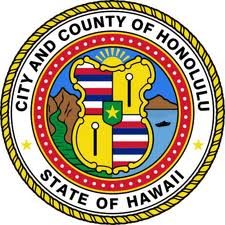By Staff Reports
(HONOLULU) – The City and County of Honolulu (City) encourage Oʻahu residents to share their past experiences with disaster recovery by taking the Long-Term Disaster Recovery Plan Survey at resilientoahu.org/disasterrecovery.
This project was initiated earlier this year prior to the tragic wildfire event on Maui, and is funded in part by a post-disaster FEMA grant following the multiple presidential disaster declarations across Hawaiʻi in 2018.
The survey gathers input on how well residents could access relief and recovery resources following recent climate hazard and disaster events, as well as through the health and economic emergency of the COVID-19 pandemic, which many are still recovering from. Since 2014, there have been 11 major disaster declarations across Hawaiʻi due to tropical storms, hurricanes, flooding, land and mudslides, volcanic eruption and lava flow, earthquake, the COVID-19 pandemic, and wildfire.
The survey will inform the visions, goals, and specialized components of the City’s first Long-Term Disaster Recovery Plan, which is currently being developed by the Office of Climate Change, Sustainability and Resiliency; Department of Emergency Management; other government partners; and local community-based organizations. Envisioned by community in Action 19 of the City’s Ola: Oʻahu Resilience Strategy, the Plan will include a framework and guide for how the City, community-based organizations and residents can work together on the long road of recovery to build back better after a major hazard event.
The Long-Term Disaster Recovery Plan complements the City’s existing disaster response and near-term recovery plans by focusing exclusively on the period of long-term recovery, which includes actions taken months to years after a disaster occurs and that benefit from pre-planning and a framework to support decision-making and coordination. Being prepared before, during, and after disasters helps keep our communities safe and improves our collective resilience in “bouncing forward” after events.
The survey will be open through September 12, 2023, and respondents’ manaʻo will be integrated into the draft Long-Term Disaster Recovery Plan, which will be available for review and public comment later this fall.
Destructive climate events and major disasters have increased steadily in frequency and severity over the last decade, and the City Climate Change Commission’s updated 2023 Climate Change Brief indicates increasing local risks for multiple hazards. According to the National Oceanic and Atmospheric Administration, between 2018 and 2022, the U.S. experienced 90 disaster events with losses exceeding $1 billion, resulting in a total cost of $611.8 billion. This is a substantial increase from the preceding decade which saw a total cost of $95 billion between 2010 and 2019. Rebuilding after disasters requires assistance, funding and collaboration at the federal, state and local levels, with participation and support from nearby communities.
Our hearts go out to those affected by the wildfires on Maui and Hawaiʻi. If you’d like to support response and recovery efforts, please volunteer as opportunities arise or donate to Hawaiʻi Community Foundation, Maui United Way or other reputable organizations.

